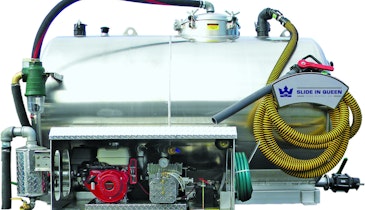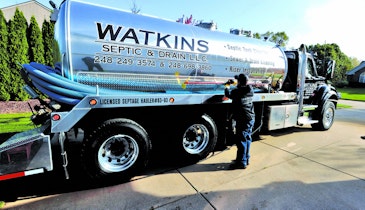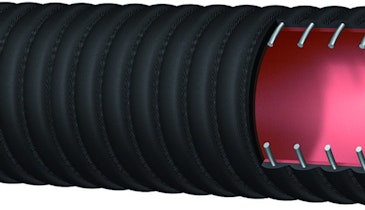How do I add a second parking brake to my service vehicle?
Question:
I have a tandem truck with a 3,000-gallon tank and was considering adding a parking brake to the rear axle. The middle axle has a parking brake, but I would feel a lot safer with both the tandems locked when I am pumping. I have a lot of grades I park on during service. Has anybody done this? I was just wondering about the feasibility of this; it seems pretty simple to do.
Answers:
It is fairly simple, I think. You probably need either a spring brake valve and/or a relay valve, depending on the wheelbase of your truck and other factors. It is important to do it right, because the springs need to activate if there is an air-pressure loss. At its simplest, it may be just a matter of getting a four-port version of the valves controlling your front axle. But take your truck to a good shop and get someone qualified to look at it and tell you what you need.
***
You have two spring brakes. You need two more spring brakes and two wheel chocks. Spring brakes can only simulate 65 psi of brake pressure, not much in my opinion. Wheel chocks are a must.
***
Take a truck with the brakes not adjusted correctly and no wheel chocks, and in less than five seconds you could end up with the loss of a truck, $500,000 in property damage and possible loss of life. I wouldn’t want that on my mind at night. So get it fixed right or just stay on level ground all the time.
***
When was the last time the DOT or NHTSA (Department of Transportation or the National Highway Traffic Safety Administration) allowed a truck like that to go down the road and how has it been passing DOT inspections since? I think spring brakes have been required on all rear axles for decades. If I am not mistaken retrofits were mandated as well. He deserves credit for recognizing the problem and trying to fix it, but shame on him if he’s driving it now that he knows there’s a problem. It sounds like his concern is holding on hills, but I wonder if he realizes what would happen if he blew a hose on the highway and needed those spring brakes to bring his rig to a stop. I wonder if he bought the truck that way or if an inexperienced shop installed it. He may have some recourse. I had an air axle added to a truck by an experienced shop with a good reputation and even they screwed up. They didn’t realize the Japanese truck manufacturer was using antilock technology. When the brakes were applied hard the antilock sensed traction loss and released the brakes on the main rear axle. This was causing the lift axle to do all the stopping, which resulted in skidding, smoking, wheel hop and increased stopping distance.
***
My 1980 truck only had emergency brake chambers on the front drive axle. It passed three Wisconsin DOT inspections by a trooper. One was in 2002. He did try to ticket me for not having straps holding down my hoses (unsecured load).
***
This is my second tandem truck and both of them only came with a spring brake on the middle axle and they both passed DOT inspection. One is a 1994 and one a 2000. I was even stopped at a roadside DOT spot check and didn’t get a ticket or mention of needing additional spring brakes. The DOT inspections have been done at three different dealerships: Mack, International and Kenworth. I’ll have to look into the requirement of spring brakes on both tandems since three dealerships and a state trooper apparently don’t know what they are doing. Anyway, I had the spring brakes added to the rear axle and I feel a lot better now.
How do I rid the septic tank of roots?
Question:
Does anyone have tips for getting rid of roots inside a septic tank or know of any products that work?
Answer:
The wisest choice for root removal in this situation would most likely be by mechanical means. Physically cutting and removing the roots. Of course the tank would be a considered a confined space, and you’d have to follow all of the necessary safety precautions.
Lastly, if roots have intruded on a septic tank, the watertight integrity of the tank has been compromised. Most likely a new tank is the answer, not killing or removing the roots.





